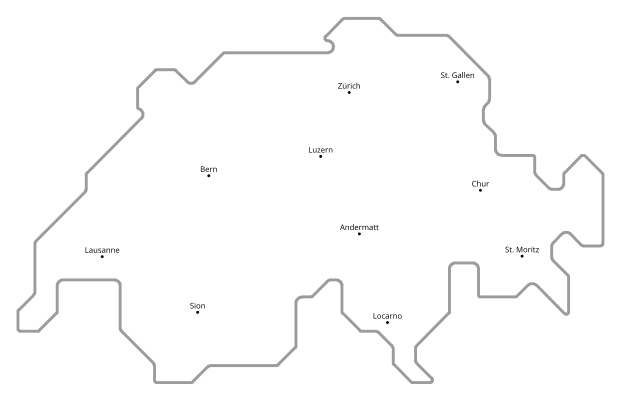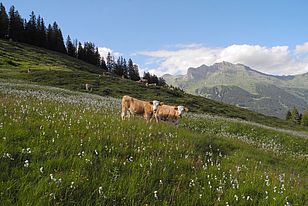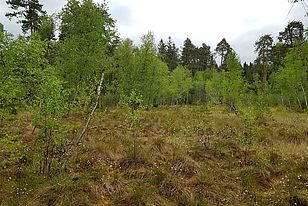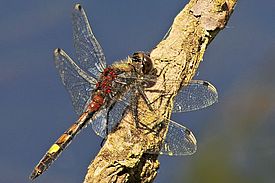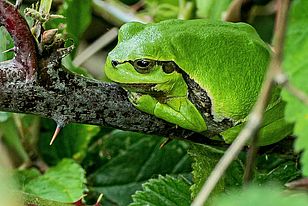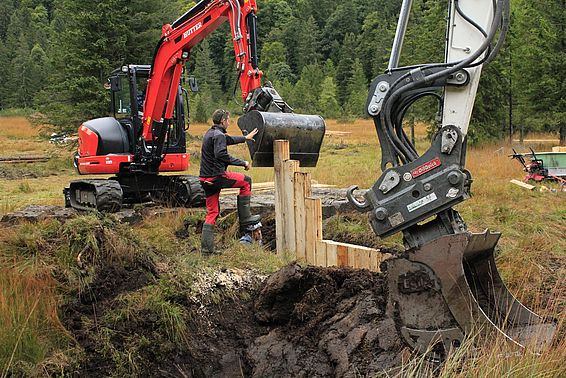28.09.2021 | Beate Kittl | News WSL
The overall quality of Swiss peatlands continues to decline despite constitutional protection. However, the effects of renaturation are slowly becoming noticeable. Experts from research and practice exchanged views on the latest developments and effective measures last week at a conference at the Swiss Federal Institute for Forest, Snow and Landscape Research.
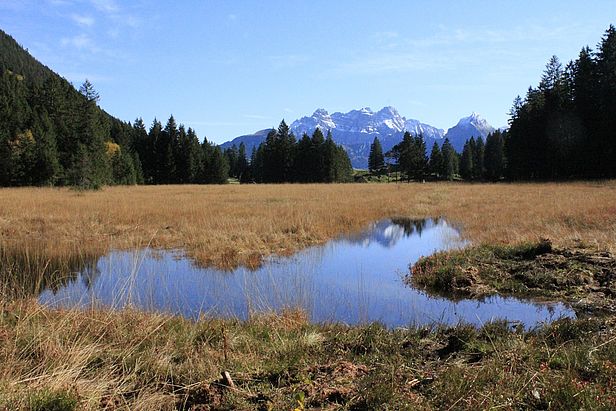
The latest data from the 25-year peatland monitoring programme make a clear statement: Swiss raised bogs and fens keep drying out and they are becoming increasingly overgrown with bushes. "The negative trends are continuing," says Ariel Bergamini, a peatland researcher at WSL. He is head of the Monitoring the Effectiveness of Habitat Conservation in Switzerland (WBS), which monitors the development of peatlands, among other things. The main problem for the bogs is that they are increasingly drying out, often due to old drainage ditches. In addition, there is scrub encroachment: bushes and trees grow better on the drying soils, as well as on fens where agricultural use as meadows and pastures has been abandoned. The tall vegetation displaces the typical moorland flora and fauna.
Bergamini can also report some positive developments, however: The raised bogs in the Central Plateau, where these valuable ecosystems have been particularly severely diminished and impaired, are slowly improving. On average, the humidity has increased and the cover of bushes and trees has decreased*, which can be seen in aerial photographs. "That's where renaturation measures become evident, because the bushes don't disappear by themselves," says the researcher. "Something is being done and it's worth it from a nature conservation point of view."
Dragonflies buzz above new ponds
Indeed, Sébastien Tschanz from the Service de la faune, des forêts et de la nature, Canton of Neuchâtel, confirmed a positive effect on the fauna at the conference in Birmensdorf (ZH): with the restoration of the Sous-Martel-Dernier marsh from 2013 onwards, the number of dragonfly species increased from 15 to over 52 by 2021. Many of these are rare and highly endangered in Switzerland.
When managing fens, it is important to prevent the ingrowth of bushes and trees. Mowing or grazing can both achieve this, said Markus Peintinger, a visiting scientist at WSL, as shown by a joint project of WSL and the University of Zurich surveying the plant cover of peatlands between 1995 and 2015. "Leaving land fallow harms the fens. But that can be reversed."
Xavier Jutz from the ecobureau PLUSPUNKT gave an impressive demonstration of how raised bog restoration actually works. Walls of wooden planks wedged into each other, so-called wooden sheet piles, close former ditches. Unwanted trees such as spruce and bushes were removed. Weirs regulate the water level in a targeted manner. The result is a wet and light bog where rare species have been able to reestablish themselves, for example the dragonfly Leucorrhinia pectoralis, which is threatened with extinction. The restored Torfriet is now home to the largest population of this species in the canton of Zurich.
Save peatlands, prevent CO2 emissions
So, such work is very effective - but also very expensive. How do municipalities and cantons get additional money for this? One possibility is the sale of CO2 compensation certificates. When peatlands dry up, they emit large amounts of CO2. If they are rewetted, this stops. The saved tonnes of CO2 stored in the soil can be sold as certificates. Using the max.moor compensation mechanism developed by WSL scientist Lena Gubler, institutions or companies such as construction firms or garages can compensate CO2 in favour of peatland restoration. The WEF economic summit, for example, has reduced its carbon footprint with 300,000 francs of peatland restauration certificates. The demand is so high that Switzerland cannot implement renaturations fast enough, said Gubler.
Rice on Swiss peat soils?
The agricultural research centre Agroscope is also looking for a remedy for greenhouse gas emissions from (former) peat soils used for agriculture. Such soils can be very fertile. However, this happens at the expense of the climate and soil quality; drainage is furthermore very expensive. In fact, peat soils are responsible for about one tenth of greenhouse gas emissions of agriculture, although they make up only small parts of the farmland, as Agroscope staff member Chloé Wüst-Galley explained. Peat soils covered with sand produce better yields again. They emit hardly any less CO2, but 90% less nitrous oxide, another greenhouse gas.
Another possibility would be to grow crops adapted to wetness - namely rice. Rice thrives not only in tropical but also in temperate zones. Moisture-loving animal and plant species that have disappeared in agriculture could thus find a temporarily flooded habitat again, said Yvonne Fabian from Agroscope. Together with a number of farmers, the institute has tested ecological wet rice cultivation. Wetland species such as tree frogs, natterjack toads and snipe are settling in the fields again, and the rice is a high-quality niche product for the farmers. However, the cultivation is very laborious, and Agroscope wants to optimise this further.
Renaturation works
According to Xavier Rutz, the conclusion is clear: "Renaturation works". When peatlands are restored to a functioning - i.e. wet and light - state, this serves both biodiversity and climate protection. However, conference leader Ariel Bergamini warns: "What is being done is not yet enough to reverse the negative trends."
The innovation project "Dealing with drained soils" of the cantons of Aargau, Bern and Zurich presented at the conference lists "5 reasons why we should protect peatlands" in a brochure. In addition to biodiversity, climate and resource protection, they also cite social values: peatland soils are irreplaceable and they and their inhabitants fascinate people and attract tourists and recreation seekers.
* Aerial photographs and vegetation surveys are used in monitoring peatland development. In the vegetation surveys, the range of optimal environmental conditions is recorded for each plant, indicated by a moisture, light or nutrient value. The average of these "values" of the plants found at a site indicates the current conditions there.
Contact
The conference programme
Copyright
WSL and SLF provide the artwork for imaging of press articles relating to this media release for free. Transferring and saving the images in image databases and saving of images by third parties is not allowed.
